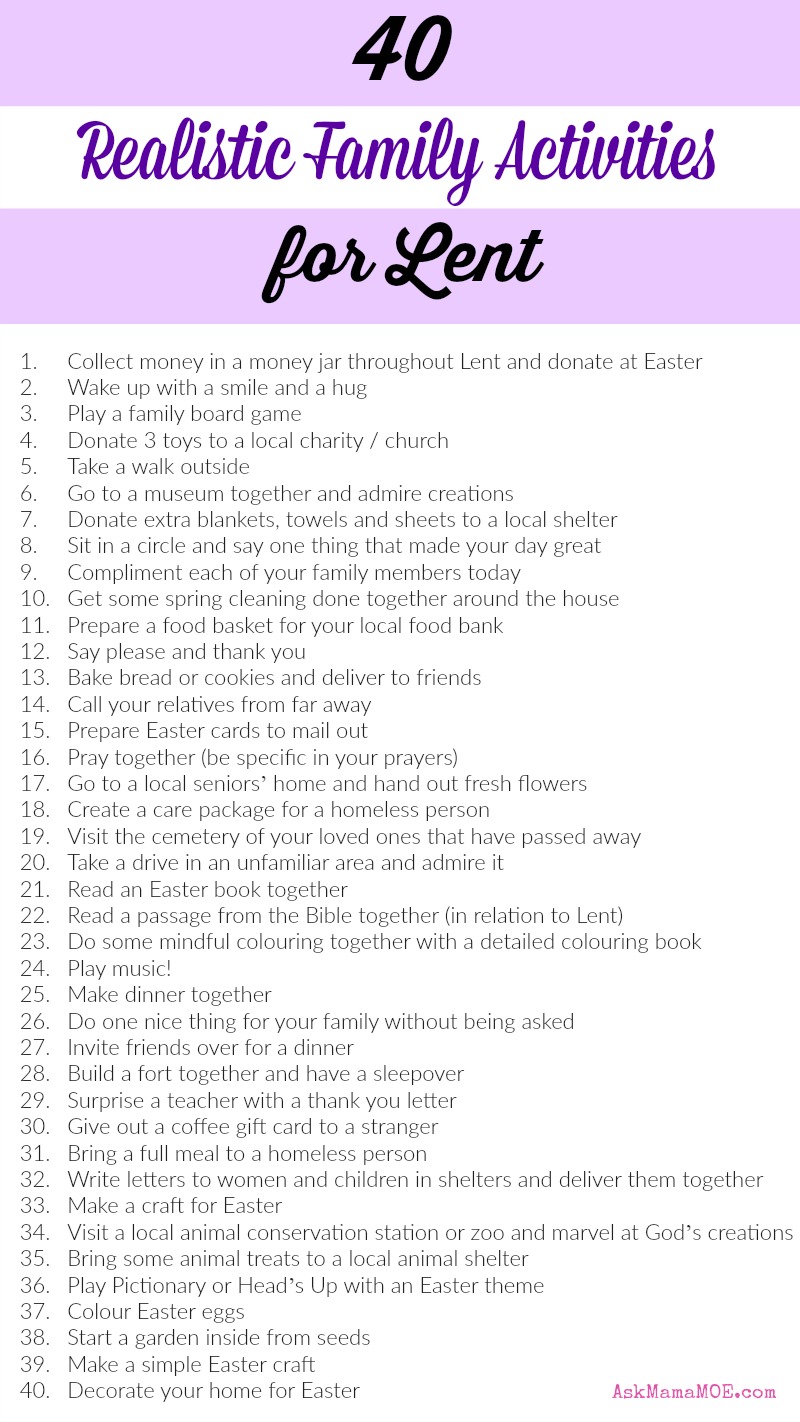I have looked high and low over the years for a similar Lenten calendar I had when I was a child in school. Pinterest is filled with ideas and calendars but they are not exactly what I was looking for. If you have no idea what I’m talking about, let me fill you in.
Lent consists for the 46 days before Easter Sunday. It begins on Ash Wednesday, and the day before that is one most everyone knows: Mardi Gras (the day people have pancakes for dinner). To read more about Mardi Gras, click here.
On the Sundays during Lent, there is no fasting (that’s why you may have heard Lent is 40 days not 46), but the other days, traditionally in the Catholic faith, are days of fasting. If you look up what consists of fasting now, it basically means to have lighter meals, and maybe remove one meal each day. Some people strongly believe in removing all meats from the 40 days of Lent, and some remove meat on all Fridays during Lent. If anything, on Ash Wednesday and Good Friday (the Friday before Easter) there is no meat eaten at all on those holy days.
So now, Catholics are officially in the time of Lent. The period of time is based on Jesus’ time in the dessert, reflecting in prayer and fasting, before starting his public ministry. But Lent is really not about fasting anymore. Let’s get real, I’m not going to serve my young children less meals in a day. However, we do cut back on sweets and any extra foods we don’t require to sustain ourselves. Adults sometimes give up alcohol, or excess social media time, or something they indulge in frequently. I personally have given up chocolate for over 20 years and have no plans of stopping that, but I don’t enforce this solid rule on my children.
As Catholics, we use this time to reconnect with God. Lent is served as a time to refocus, to listen more and pray with purpose, to strengthen our relationship with our higher power. And in doing so, we are preparing for Easter as well. Easter is our holiest of days; actually more holy than Christmas itself. And if you’ve ever wondered how eggs got in the picture for Easter, it’s because like the spring season, Easter is about rebirth. The fasting period is broken on Easter Sunday, thus the sweets and chocolate eggs.
During Ash Wednesday evening mass, our priest reminded us that if we decide to give up certain indulgences but don’t try harder to reconnect with God, there is not point in giving up anything. Ash Wednesday’s readings from the Bible are a little juxtaposed. In one reading we are told to happily proclaim our faith by proudly wearing our ashes on our heads (a symbolic sign of penance). In another reading, we are told to hide away in our fasting and not let others know we are doing so because that is strictly for our relationship with Jesus.
Back To The Calendar
Ok, ok, let’s break this down for the present day. Parenting young children to understand Lent and the meaning of it needs to be in an attractive form that can easily be understood and implemented. As I mentioned above, when faith education was still in school and we did crafts relating to Lent and Easter, I remember a calendar helped us go through Lent with a purpose. In its basic form, Lent is about learning to be closer to God. And in being closer to God, you need to be aware of what is going on around you, as well as how you can help the world be a better place.
So I’ve created a list for you to print out for this Lenten season! It’s my first printable so let me know if you like it and if you would like to see more. To download the printable version, click right here! (I have to work on my printable capabilities, but hey, I’m trying!)
 If you are not Catholic, you can of course modify this as a list to get ready for spring and use these examples for your family as a tool to be more mindful citizens of the world.
If you are not Catholic, you can of course modify this as a list to get ready for spring and use these examples for your family as a tool to be more mindful citizens of the world.
I wish you all a meaningful Lenten season!

